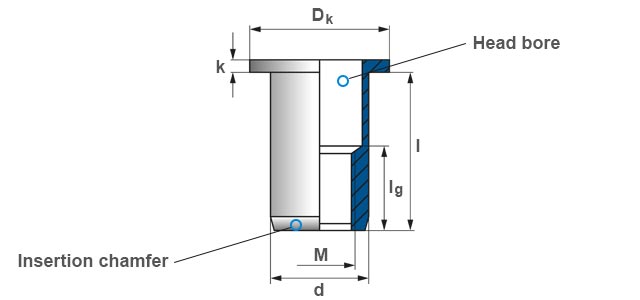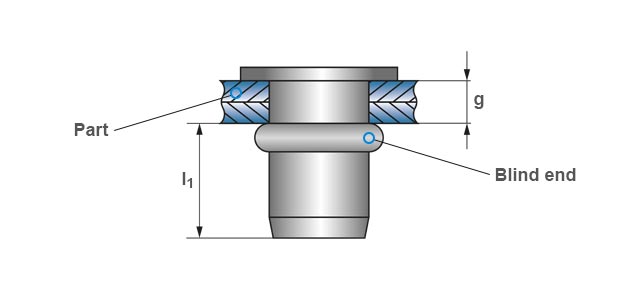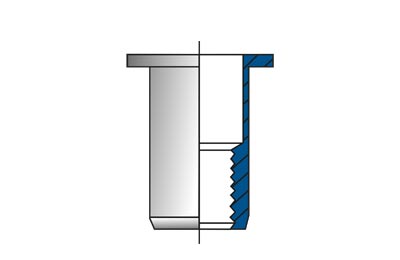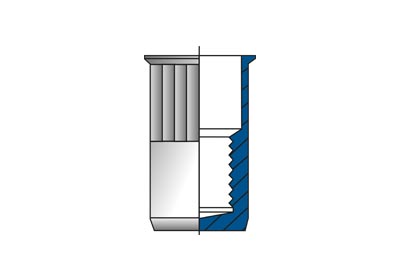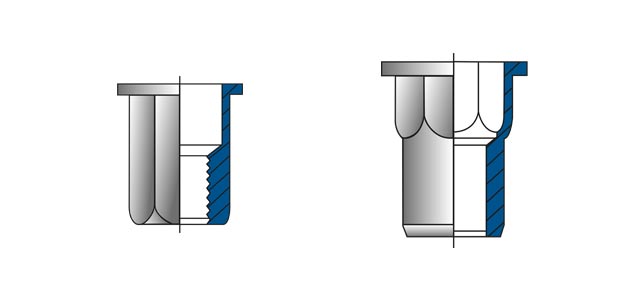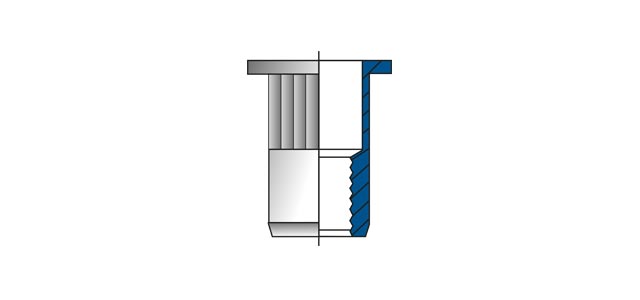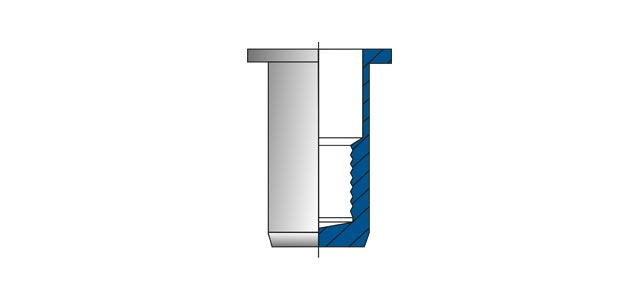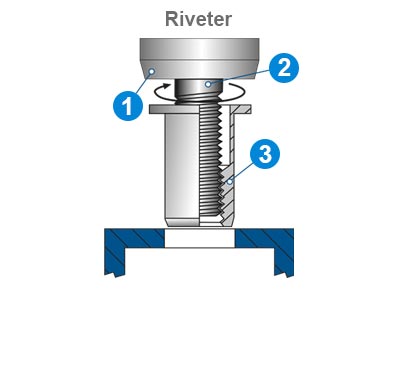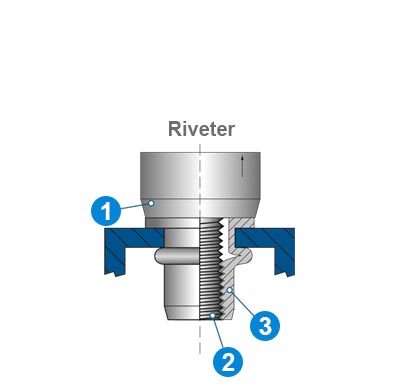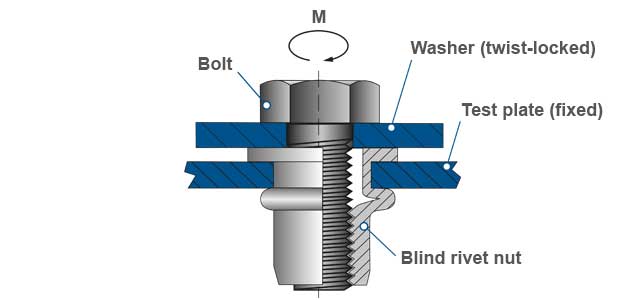Blind rivet nuts have become an indispensable part modern installation engeneering. They allow to:
- - install bolt threads of different types into ...
... thin or low rigidity components
... hollow sections or other components not accessible from both sides
... components which already have a coated surface, - connect different components to each other at the same time and
- attach additional parts.
The continous development of new types, forms and dimensions documents the nearly unlimited fields of applications. The HONSEL-Group has been one of the leading companies in this progress for decades.


